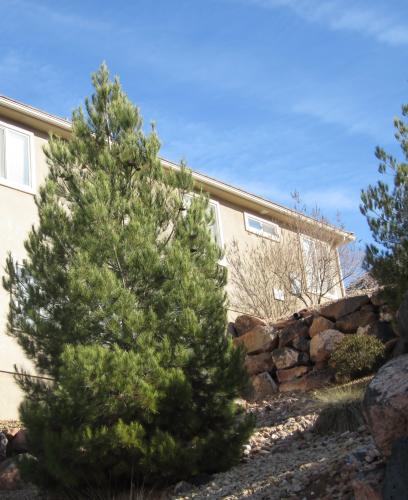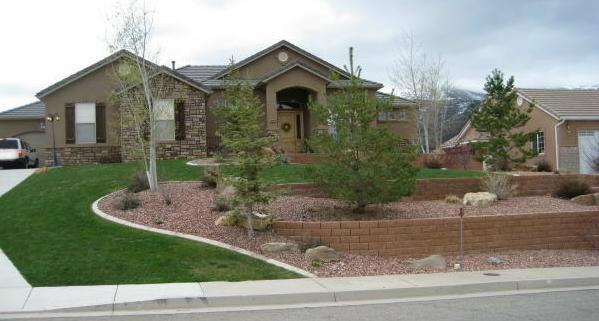Placement planning for pine-trees
The most important thing to consider when adding pine-trees to a landscape plan is the location in proximity to the patio, pool, and lawn areas. These trees drop needles in the cool time of year and can create a lot of work with their mess.
In the desert, the Mondale Pine is very common. It's cousin the aleppo pine, looks similar but has a shape more like a mushroom. Desert pine trees like others, do drop lots of needles in the spring, this process is called molting.
The molting process usually happens when new growth comes on and old interior growth dies. Because of this you need to place pines in an area where the excess amount of needles won't be a nuisance. I can remember a couple of jobs where the home owner had a pine over their pool and cursed it. Maintenance planning would have prevented this problem.

Shade from a pine tree is the problem in a higher altitude climate. Cool already, and more prone to cloudy days, the high altitude plants don't get as much sunlight and heat, when a pine tree blocks out the sun, then stuff just don't grow.
Now when you see a bare spot under a pine, you understand why nothing will grow there.

You can see in the photo above, I placed the Austrian Pine Trees out of the lawn areas to keep the maintenance to a minimum. This is in Cedar City at an elevation of 4900 feet. This cold weather landscape is beautiful in the summer.
My favorite thing about the cooler climates is that because of the short growing season, plants and trees grow a little slower and a yard doesn't get over grown as easily. Especially if you plan for the correct sizes of all the plants and trees




Home
Top of page pine-trees
|